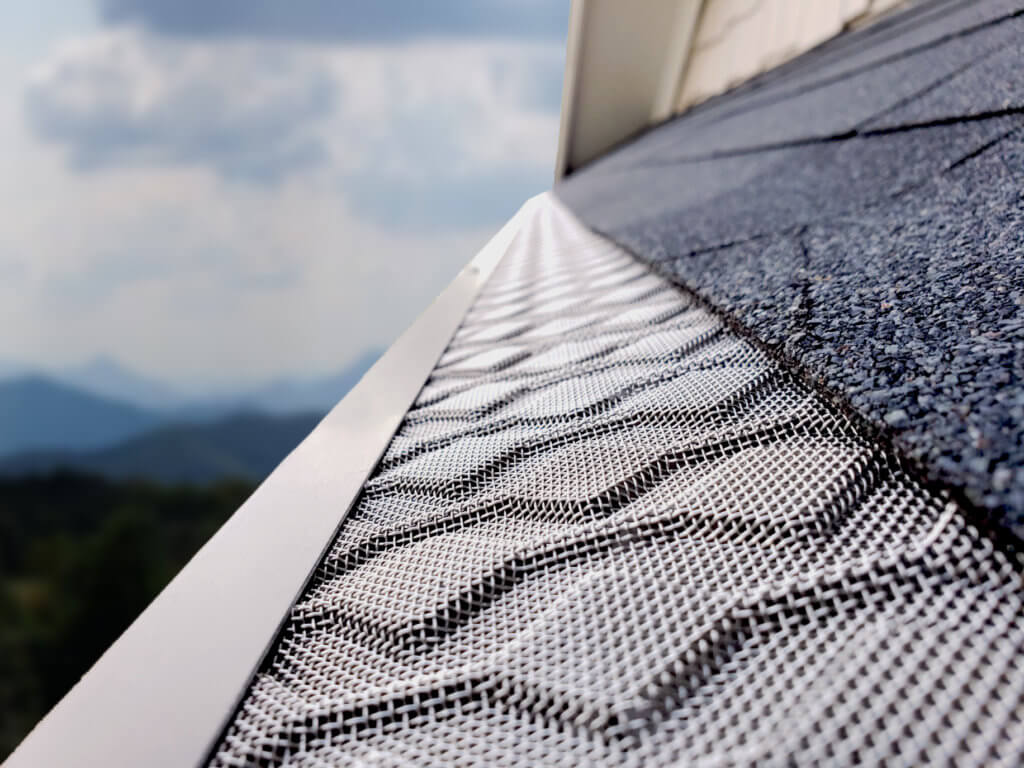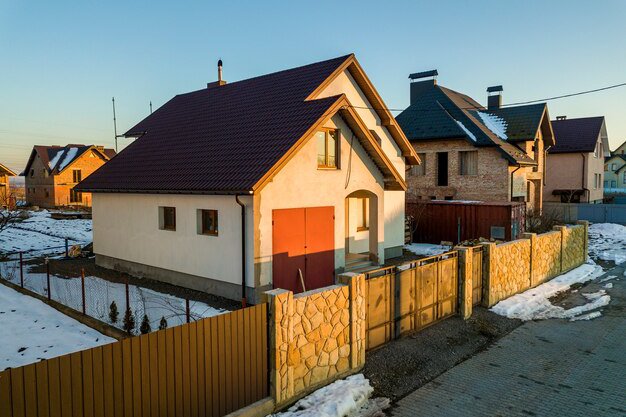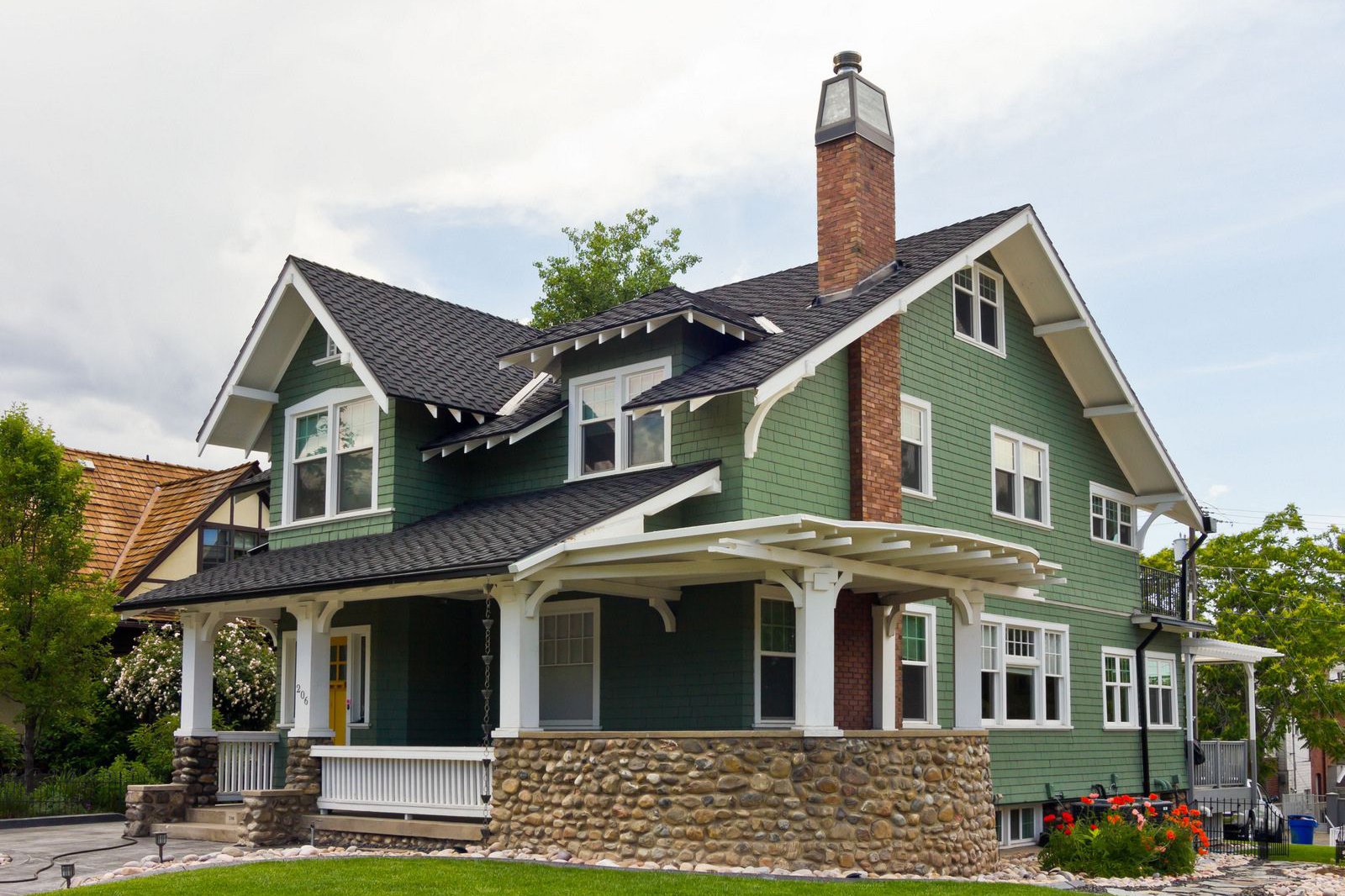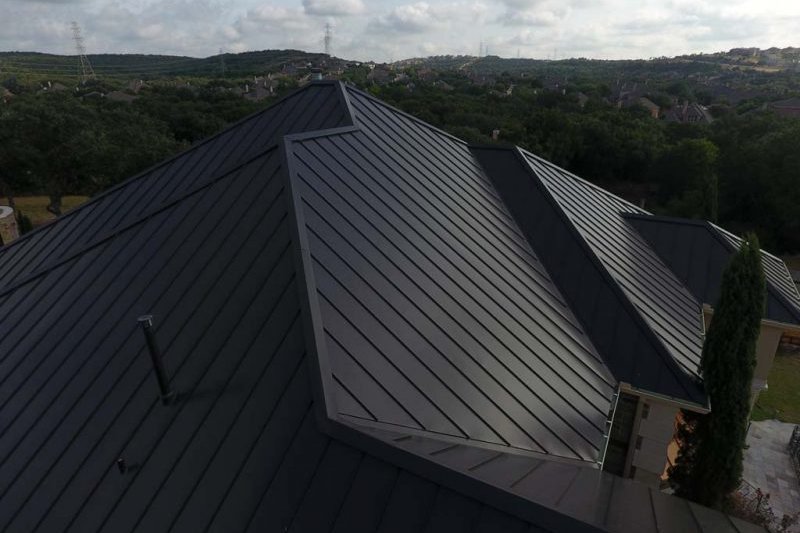Why You Should Avoid 3-Tab Shingles for Your Lincoln City, Oregon Home
Choosing the right roofing material is one of the most critical decisions a homeowner faces. The roof is your primary defense against the elements, protecting your investment and ensuring the comfort and safety of your family. While various options exist, asphalt shingles remain the most popular choice across North America. Within the asphalt shingle category, there are distinct types, the most basic being the 3-tab shingle. For homeowners in coastal regions like Lincoln City, Oregon, understanding the limitations of 3-tab shingles is particularly important. This article will delve into why 3-tab shingles are often not the best choice for your home, especially when compared to more modern alternatives like architectural shingles, and how to make an informed decision about your roofing needs in the unique climate of the Oregon coast.
What Exactly Are 3-Tab Shingles?
3-tab shingles are the traditional, entry-level asphalt shingle product. They are easily recognizable by their design: each shingle strip is manufactured with cutouts or "tabs" along the bottom edge, making the installed roof surface appear as if it's composed of three separate tabs per shingle. This gives them a flat, uniform look across the roof plane.
Historically, 3-tab shingles were the standard for residential roofing due to their affordability and relative ease of installation. They consist of a single asphalt-saturated fiberglass mat, coated with mineral granules on the exposed surface and a thin layer of asphalt or adhesive on the back. The tabs are created by cutting slots into the mat layer. They typically come in a limited range of basic colors and offer the lowest initial cost among asphalt shingle types.
While they served their purpose for many years, technological advancements in roofing materials have introduced more robust and visually appealing options. Understanding their basic construction is key to understanding their inherent limitations, especially when faced with challenging environmental conditions.
Why 3-Tab Shingles Fall Short (Especially in Coastal Climates)
The primary reasons homeowners and roofing professionals increasingly recommend against 3-tab shingles for primary residential roofing, particularly in areas exposed to harsh weather like the Oregon coast, stem directly from their single-layer construction and design.
Lower Wind Resistance
One of the most significant drawbacks of 3-tab shingles is their low wind resistance. Standard 3-tab shingles typically have a wind warranty of 60 to 70 miles per hour. This is considerably lower than the wind ratings of architectural shingles, which commonly range from 110 to 130 mph, and can often be installed to meet higher wind codes.
In coastal areas like Lincoln City, Oregon, strong winds are a regular occurrence, especially during storm events. The single-layer design and the distinct cutouts of 3-tab shingles make them more susceptible to wind uplift. Wind can catch the edges of the tabs, lifting them and potentially tearing the shingle or breaking the seal that holds them down. Once one shingle is lifted or lost, it exposes the underlying layers and adjacent shingles to the wind, leading to a cascading failure that can quickly result in significant roof damage or widespread shingle loss.
Coastal climates demand roofing materials engineered to withstand higher wind speeds. Choosing a shingle with a superior wind rating is a critical investment in your home's protection. If you're unsure about your roof's wind resistance or condition, a professional assessment is advisable.
Shorter Lifespan and Reduced Durability
3-tab shingles have a shorter expected lifespan compared to architectural shingles. While manufacturer warranties for 3-tab shingles often range from 20 to 25 years, their actual performance life can be significantly less, particularly in climates with temperature extremes, heavy rain, and strong sun exposure. The single, thinner layer of asphalt and fiberglass is less resilient to the stresses of thermal expansion and contraction caused by temperature fluctuations.
This reduced durability also means they are more prone to physical damage. Hail, falling branches, or even foot traffic during maintenance can cause cracks or punctures more easily than on thicker, multi-layer shingles. The mineral granules, which protect the asphalt layer from UV rays and add color, tend to shed more quickly on 3-tab shingles as the thin asphalt binder deteriorates. Excessive granule loss is a clear sign that the shingle is losing its protective capabilities and nearing the end of its life.
Increased Susceptibility to Environmental Factors
Beyond wind, coastal environments present other challenges that 3-tab shingles are less equipped to handle.
- Moisture: Constant exposure to damp air and frequent rain can accelerate the deterioration of the asphalt layer and the bond holding the granules. While all asphalt shingles are designed to be water-resistant, the thinner construction of 3-tab shingles offers less margin for error over time. Moisture can also contribute to the growth of moss and algae, which can lift the shingle tabs and further degrade the material.
- UV Degradation: Even on cloudy days, UV rays contribute to the breakdown of asphalt. The thinner protective layer of granules and asphalt on 3-tab shingles means they are more vulnerable to UV damage over their lifespan, leading to brittleness and cracking.
- Thermal Cycling: The significant temperature swings that can occur throughout the year, or even within a single day, cause materials to expand and contract. The single layer of 3-tab shingles is less able to withstand this constant stress compared to the laminated structure of architectural shingles, leading to cracking and reduced flexibility over time.
Less Aesthetic Appeal
While performance is paramount, aesthetics are also a factor for homeowners. 3-tab shingles provide a flat, uniform look that many consider less visually appealing than the dimensional appearance of architectural shingles. Their basic design doesn't offer the depth and shadow lines that can enhance a home's curb appeal. For many modern homes or those seeking an updated look, 3-tab shingles can make the roof appear dated.
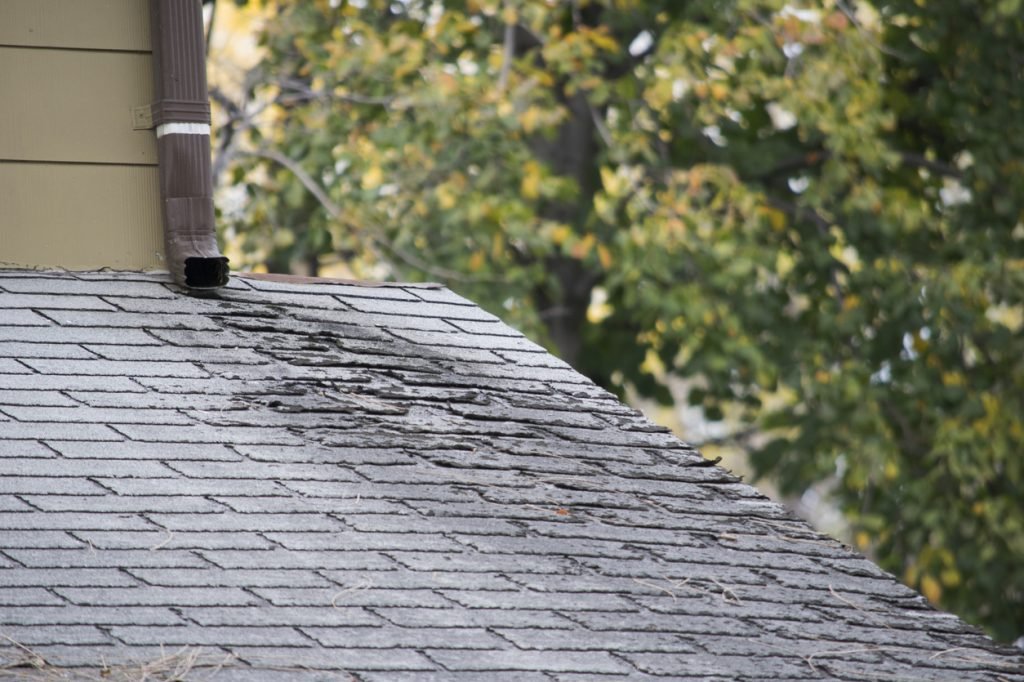
An example of a roof with older 3-tab shingles showing signs of wear and granule loss.
Architectural Shingles: A Superior Alternative
Architectural shingles, also known as laminate or dimensional shingles, are the most popular asphalt shingle choice today, and for good reason. They address the key weaknesses of 3-tab shingles through their construction and offer significant advantages.
Construction and Appearance
Unlike the single-layer design of 3-tab shingles, architectural shingles are manufactured with multiple layers of asphalt-saturated fiberglass mats that are laminated together. This creates a thicker, heavier, and more durable shingle. The lamination process allows manufacturers to vary the shape and thickness of the layers, creating a random, textured appearance with distinct shadow lines that mimic the look of natural wood shakes or slate. This dimensional effect adds significant depth and visual interest to the roof, greatly enhancing a home's curb appeal.
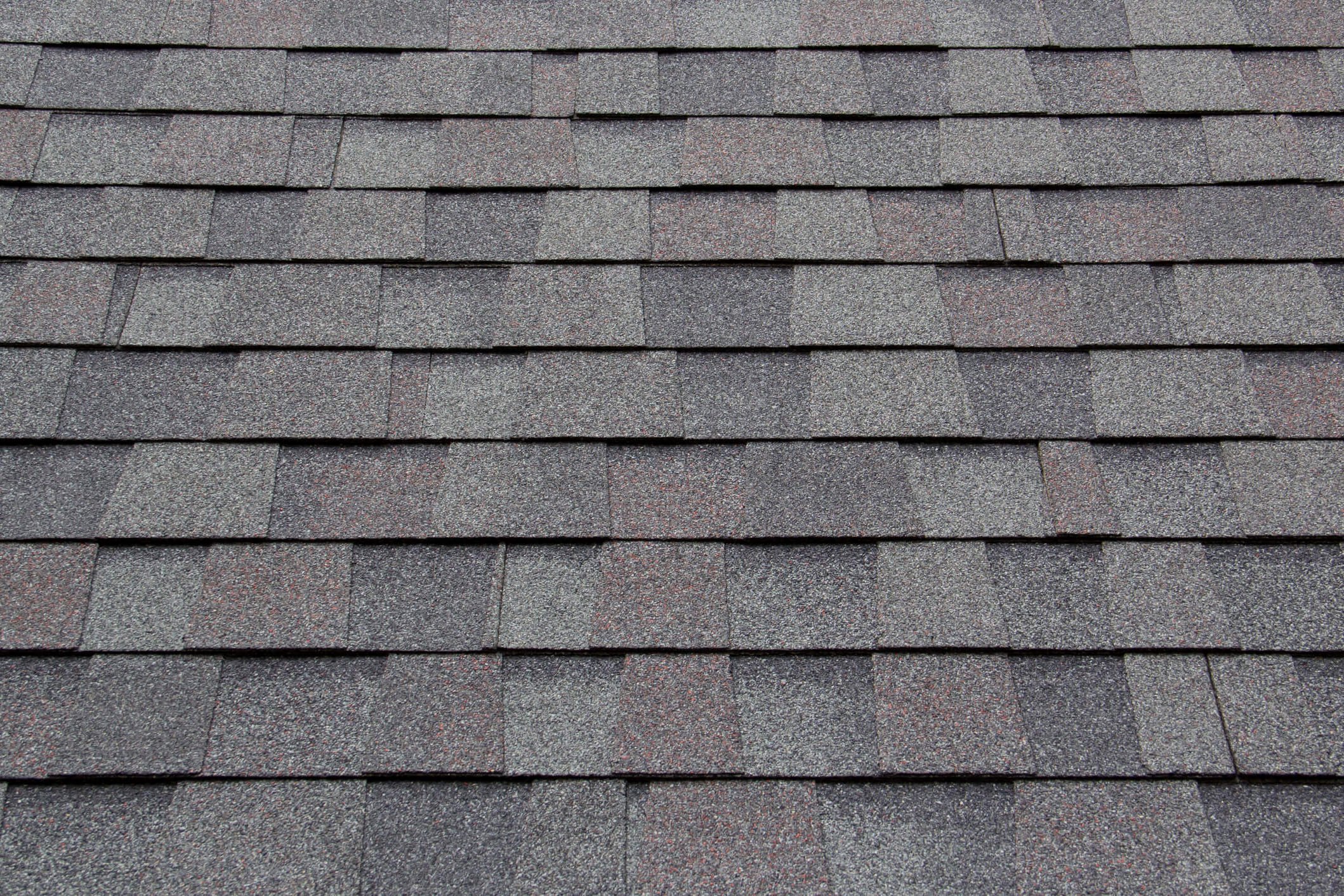
A close-up view of architectural shingles, highlighting their layered construction and dimensional appearance.
Enhanced Durability and Lifespan
The multi-layer construction of architectural shingles makes them far more durable than 3-tab shingles. They are significantly heavier and thicker, providing better resistance to impact damage from hail or debris. The increased mass and improved adhesive technology result in much higher wind resistance ratings (typically 110-130 mph), making them a far better choice for windy areas like the Oregon coast.
Architectural shingles also have a longer expected lifespan and come with much longer warranties, commonly ranging from 30 years to lifetime limited transferable warranties. This longer warranty reflects the manufacturer's confidence in the material's ability to withstand environmental stresses over a longer period. While actual lifespan can vary based on climate, installation quality, and maintenance, architectural shingles consistently outperform 3-tab shingles in longevity.
Better Performance in Challenging Weather
The robust construction of architectural shingles provides superior protection against the elements common in coastal climates. Their higher wind ratings mean they are much less likely to be lifted or blown off during storms. The thicker profile offers better resistance to water penetration and thermal cycling. While no shingle is completely impervious to moss or algae, the overall durability means the shingle structure itself remains intact longer.
In summary, architectural shingles offer:
- Superior Wind Resistance: Significantly higher ratings mean better performance in coastal winds.
- Increased Durability: Thicker, heavier construction resists impact and wear.
- Longer Lifespan: Expected to last 30 years or more, often with lifetime warranties.
- Enhanced Aesthetics: Dimensional look adds curb appeal.
- Better Overall Protection: More robust barrier against rain, UV, and temperature changes.
While the initial cost of architectural shingles is higher than 3-tab shingles, the difference is often modest when considering the total project cost (which includes labor, underlayment, flashing, etc.). Given the significantly longer lifespan, superior performance, and enhanced aesthetics, architectural shingles represent a far better long-term value for most homeowners, especially in challenging climates.
Other Roofing Options to Consider (Briefly)
While asphalt shingles are the most common residential roofing material, especially in areas like Lincoln City, Oregon, other options exist that offer varying degrees of durability, lifespan, and aesthetic appeal. These include:
- Metal Roofing: Known for its exceptional durability, longevity (50+ years), and resistance to wind, fire, and pests. Can be more expensive than asphalt shingles but offers excellent long-term value and energy efficiency. Available in various styles, including standing seam and metal shingles that mimic other materials.
- Tile Roofing (Clay or Concrete): Very durable and long-lasting (50+ years), resistant to fire and rot. Offers a distinctive aesthetic. Can be heavy, requiring structural reinforcement.
- Cedar Shake or Shingle Roofing: Provides a natural, rustic look. Requires more maintenance than asphalt or metal and is susceptible to fire unless treated. Lifespan varies but can be comparable to architectural shingles with proper care.
Each of these materials has its own set of pros and cons, including cost, weight, maintenance requirements, and suitability for different roof pitches and architectural styles. While they represent different levels of investment and performance compared to asphalt shingles, understanding their existence provides context when evaluating the lifespan and durability of shingle options.
Factors Influencing Your Roofing Choice
Selecting the right roofing material isn't just about picking a type of shingle. Several factors specific to your home and location should influence your decision:
- Climate: As discussed, the coastal climate of Lincoln City, Oregon, with its strong winds, frequent rain, and moisture, heavily favors materials with high wind resistance and durability against moisture and thermal cycling.
- Roof Pitch: Some materials are better suited for steeper or lower-pitched roofs. Asphalt shingles are versatile but require a minimum pitch.
- Budget: While initial cost is a factor, consider the total cost of ownership, including lifespan, maintenance, and potential repair costs over the roof's lifetime. A cheaper material upfront may cost more in the long run due to premature failure or more frequent repairs.
- Aesthetics and Architectural Style: The roofing material should complement your home's design and your personal aesthetic preferences.
- Local Building Codes and HOA Requirements: Check if there are any specific requirements or restrictions in your area regarding roofing materials or colors.
- Weight of the Material: Some materials, like tile or certain metal systems, are significantly heavier than asphalt shingles and may require structural assessment and reinforcement of your roof deck.
Considering these factors helps ensure you choose a roofing system that not only looks good but also provides the necessary protection and longevity for your specific situation.
The Importance of Professional Installation
Even the most durable roofing material will fail prematurely if not installed correctly. Professional installation is paramount for any roofing project, especially when dealing with materials designed for high performance. A qualified roofing contractor understands the nuances of different materials, local building codes, and best practices for ensuring a watertight and wind-resistant roof system.
Proper installation involves more than just nailing down shingles. It includes:
- Proper Decking: Ensuring the plywood or OSB roof deck is sound, properly fastened, and free of damage.
- Underlayment: Installing a quality synthetic or felt underlayment as a secondary barrier against moisture.
- Ice and Water Shield: Applying a protective membrane in vulnerable areas like eaves, valleys, and around penetrations to prevent water backup from ice dams (less common in Lincoln City but still a risk during cold snaps) or heavy rain.
- Flashing: Correctly installing metal flashing around chimneys, vents, skylights, and in valleys to direct water away from these critical transition points. Improper flashing is a leading cause of roof leaks.
- Ventilation: Ensuring adequate attic ventilation (intake and exhaust) is crucial for regulating attic temperature and moisture. Poor ventilation can lead to premature aging of shingles from the underside, mold growth, and energy inefficiency.
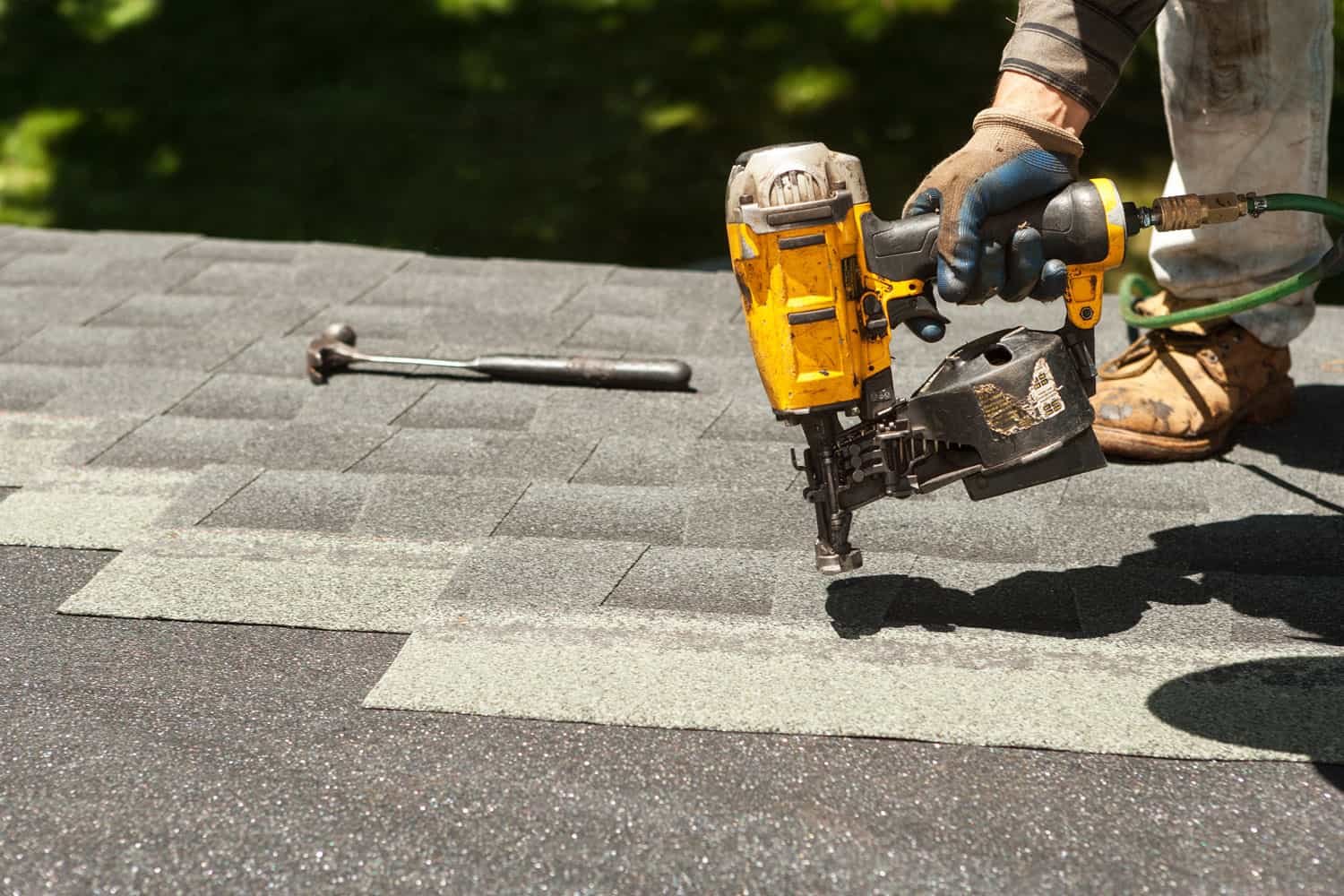
A professional roofer properly securing shingles during installation.
A professional roofer has the experience, tools, and knowledge to execute each step correctly, ensuring your new roof performs as intended and lasts its full expected lifespan. They also stand behind their work with warranties.
Investing in professional installation is just as important as investing in quality roofing materials. A skilled contractor ensures your roof system is built to last and protect your home effectively.
Maintenance Considerations
Once your new roof is installed, regular maintenance is key to maximizing its lifespan. While architectural shingles require less frequent attention than materials like wood shakes, periodic checks are still necessary.
Key maintenance tasks include:
- Regular Inspections: Visually inspect your roof from the ground periodically, especially after major storms. Look for missing, cracked, or curling shingles, damaged flashing, or signs of excessive granule loss.
- Gutter Cleaning: Keep gutters and downspouts clear of leaves and debris to ensure proper drainage. Clogged gutters can cause water to back up under the shingles or along the fascia.
- Moss and Algae Control: In damp climates like Lincoln City, moss and algae growth is common. While some shingles have algae-resistant granules (often containing copper), regular cleaning using recommended methods can prevent significant buildup that can damage shingles over time. Avoid power washing, which can strip granules and damage the shingles.
- Tree Trimming: Trim overhanging branches to prevent damage from falling limbs and reduce debris accumulation on the roof surface.
- Ventilation Checks: Ensure attic vents are not blocked and that airflow is unobstructed.
A well-maintained roof is more likely to reach its expected lifespan and provide reliable protection. If you spot issues during an inspection, addressing them promptly can prevent minor problems from escalating into costly repairs.
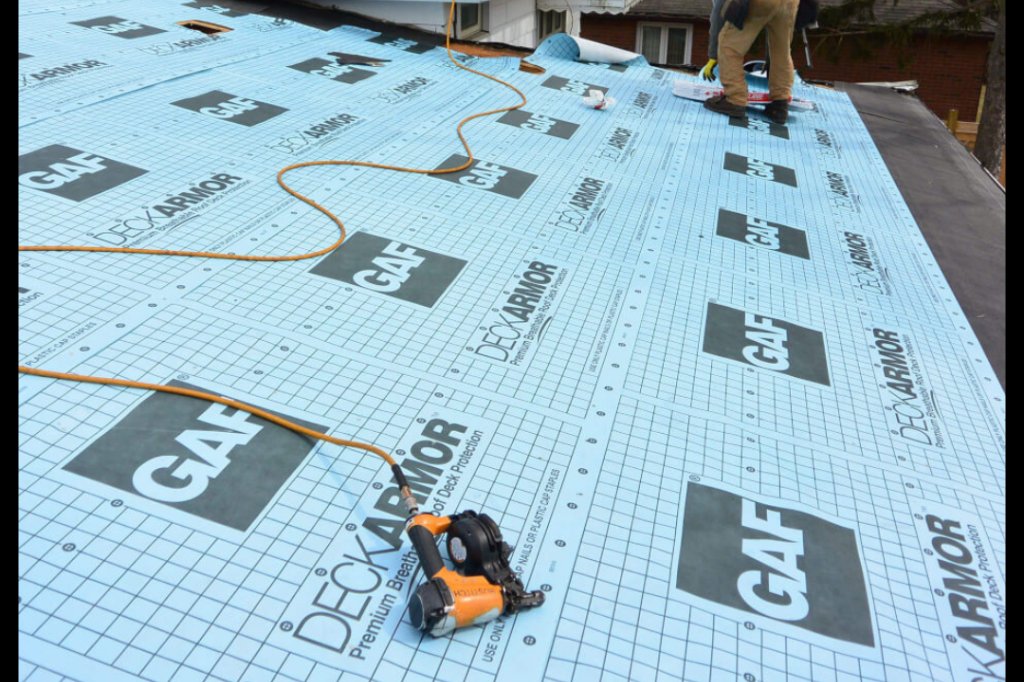
Roof underlayment being installed, a crucial step before shingles are laid.
When is it Time to Consider Roof Replacement?
Knowing when your roof has reached the end of its useful life is crucial for preventing costly damage to the rest of your home. While the expected lifespan of your material is a guideline (significantly shorter for 3-tab than architectural), certain signs indicate that replacement is necessary:
- Missing or Damaged Shingles: Numerous missing, cracked, curling, or blistering shingles are clear indicators of widespread wear and tear.
- Excessive Granule Loss: Large amounts of granules in your gutters or downspouts mean the shingles' protective layer is gone, exposing the asphalt to UV rays.
- Leaks or Water Stains: Water spots on your interior ceilings or walls are a definitive sign that your roof is failing and water is penetrating the structure.
- Sagging Roof Deck: A visible sag in the roof deck indicates a serious structural issue, potentially caused by moisture damage or insufficient support.
- Age: If your roof is nearing or past its expected lifespan (especially 20-25 years for 3-tab shingles), it's wise to have it professionally inspected even if there are no obvious signs of failure.
Ignoring these signs can lead to significant damage to your home's structure, insulation, and interior, resulting in much higher repair costs than a proactive roof replacement.
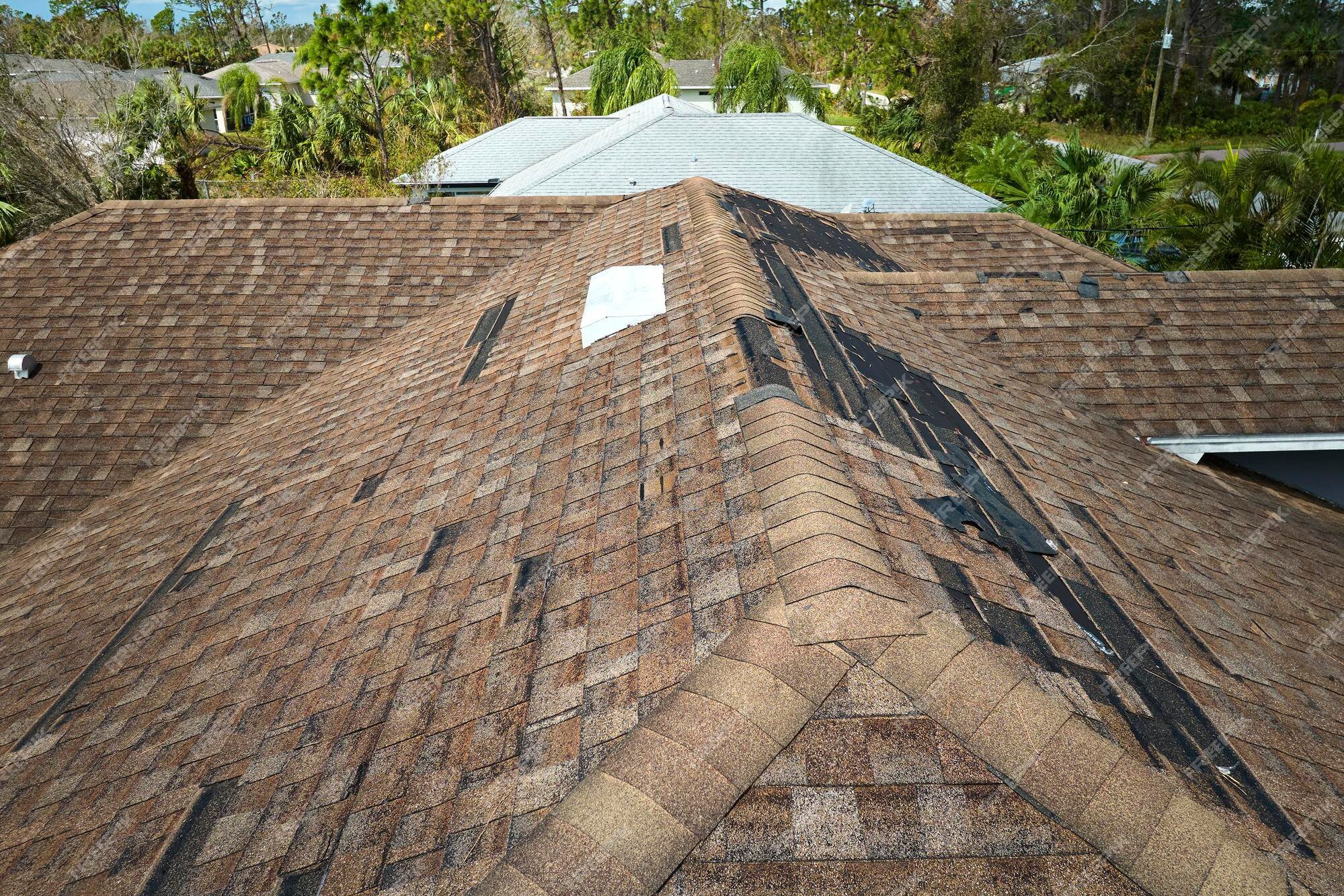
A roof showing missing shingles, often a result of wind damage or aging.
Getting Estimates and Booking Professional Services
Once you've determined that your roof needs attention, whether it's for a planned replacement or an urgent repair, the next step is to connect with qualified roofing professionals. Getting estimates and scheduling work can sometimes feel daunting, but modern tools can simplify the process.
For situations that are not immediately urgent, such as planning a future roof replacement, budgeting, comparing costs for different materials (like architectural shingles), or getting a general evaluation of your roof's condition without immediate issues:
Plan your roofing project and get an idea of costs quickly. Use our tool to get a free instant roof estimate based on satellite imagery and local pricing data. Get your free instant roof estimate
This instant estimate service provides a valuable starting point for your planning without the need for an initial in-person visit. It can help you understand the potential scope and cost involved for your property in Lincoln City, Oregon.
However, if you are facing an urgent situation like an active leak, recent storm damage, or any other issue requiring immediate professional assessment and repair:
Don't wait when you have a roofing emergency. Book a direct appointment with a pre-vetted local roofer through our system. Simply select your service need and preferred time, and we'll connect you with a quality contractor for prompt service. Book a roofing appointment
This direct booking service streamlines the process of getting a qualified professional to your home quickly when time is of the essence. It connects you with local contractors who are ready to address urgent roofing needs.
SkyQuote is designed to make the process of getting roofing estimates and booking appointments easier for homeowners. We focus on connecting you with pre-vetted local roofers, providing a bridge between your needs and the professionals who can meet them.
Choosing Durability and Value for Your Home
Ultimately, deciding on roofing material for your home in Lincoln City, Oregon, involves weighing initial cost against long-term performance, durability, and value. While 3-tab shingles may offer the lowest upfront price, their inherent weaknesses in wind resistance, lifespan, and overall durability make them a less suitable choice for primary residential roofing, especially in a coastal climate prone to challenging weather conditions.
Architectural shingles, with their superior construction, higher wind ratings, longer warranties, and enhanced aesthetics, represent a much better investment for most homeowners. They provide a more robust defense against the elements, offer greater peace of mind, and deliver better value over the lifespan of the roof. By understanding the limitations of older materials like 3-tab shingles and opting for more modern, durable alternatives installed by qualified professionals, you can ensure your home remains protected for decades to come.
